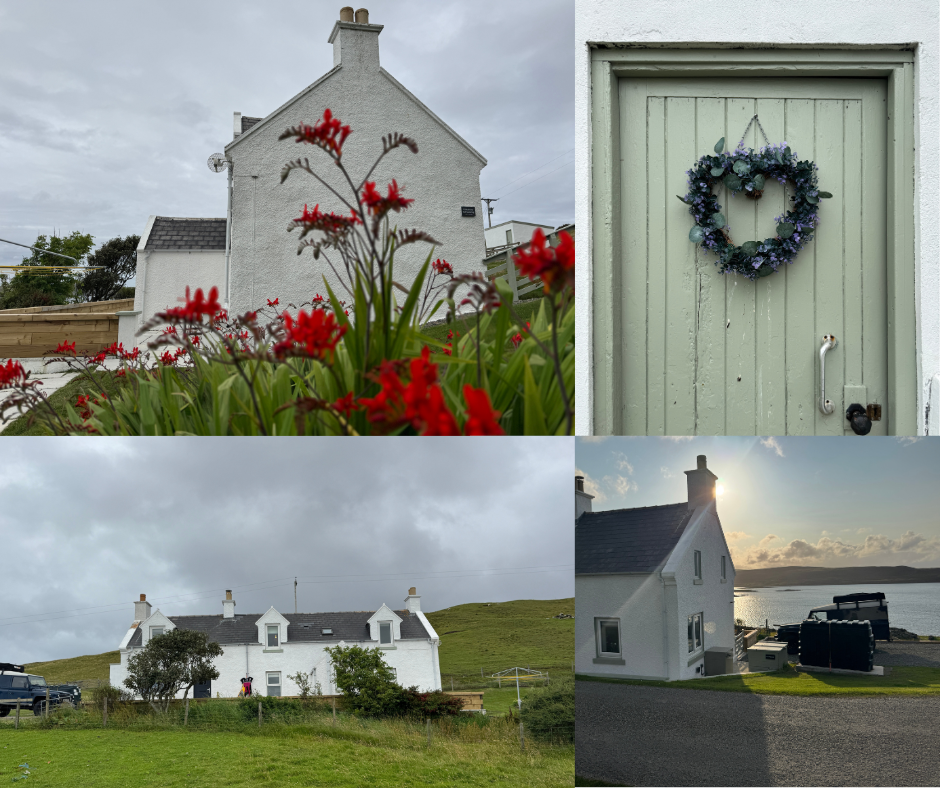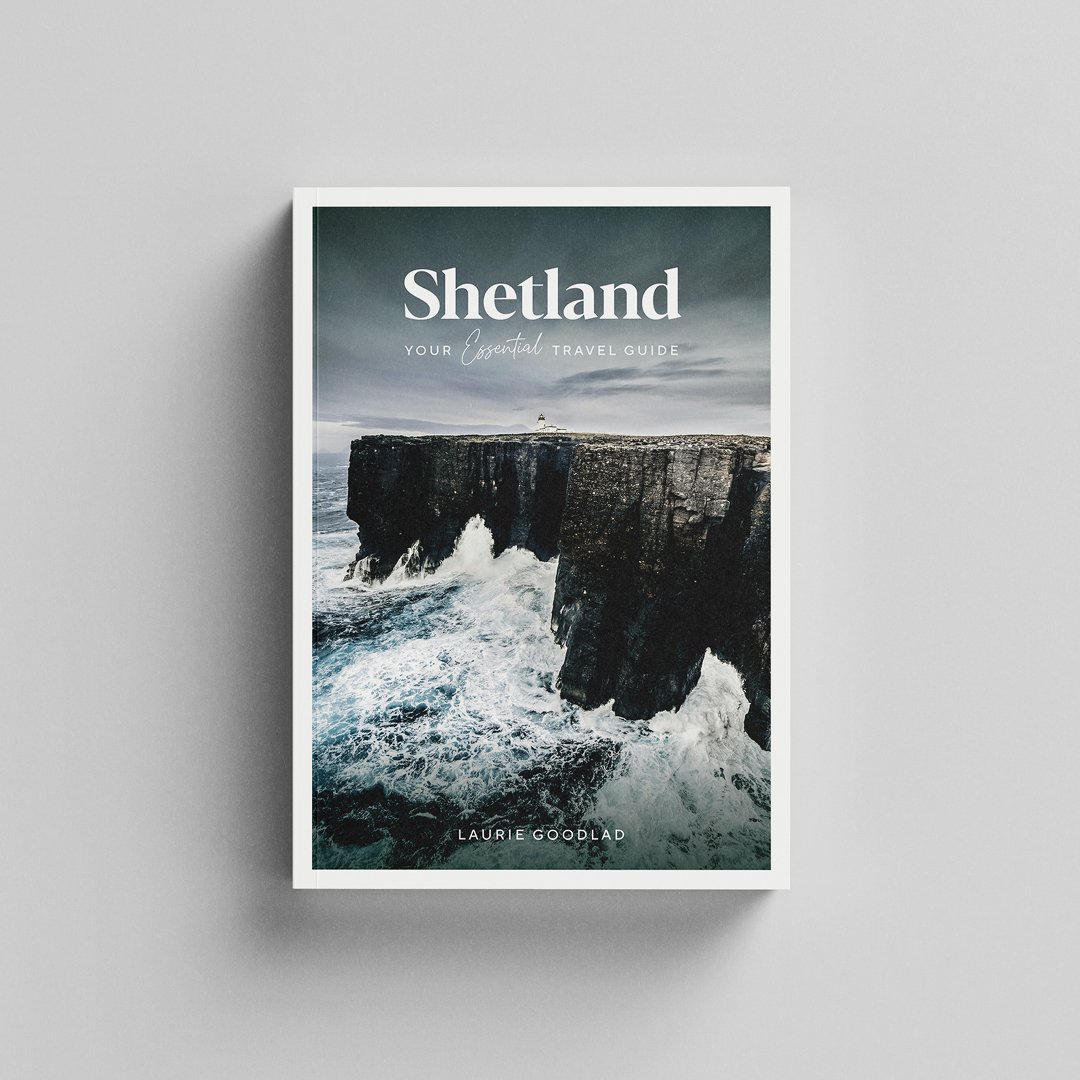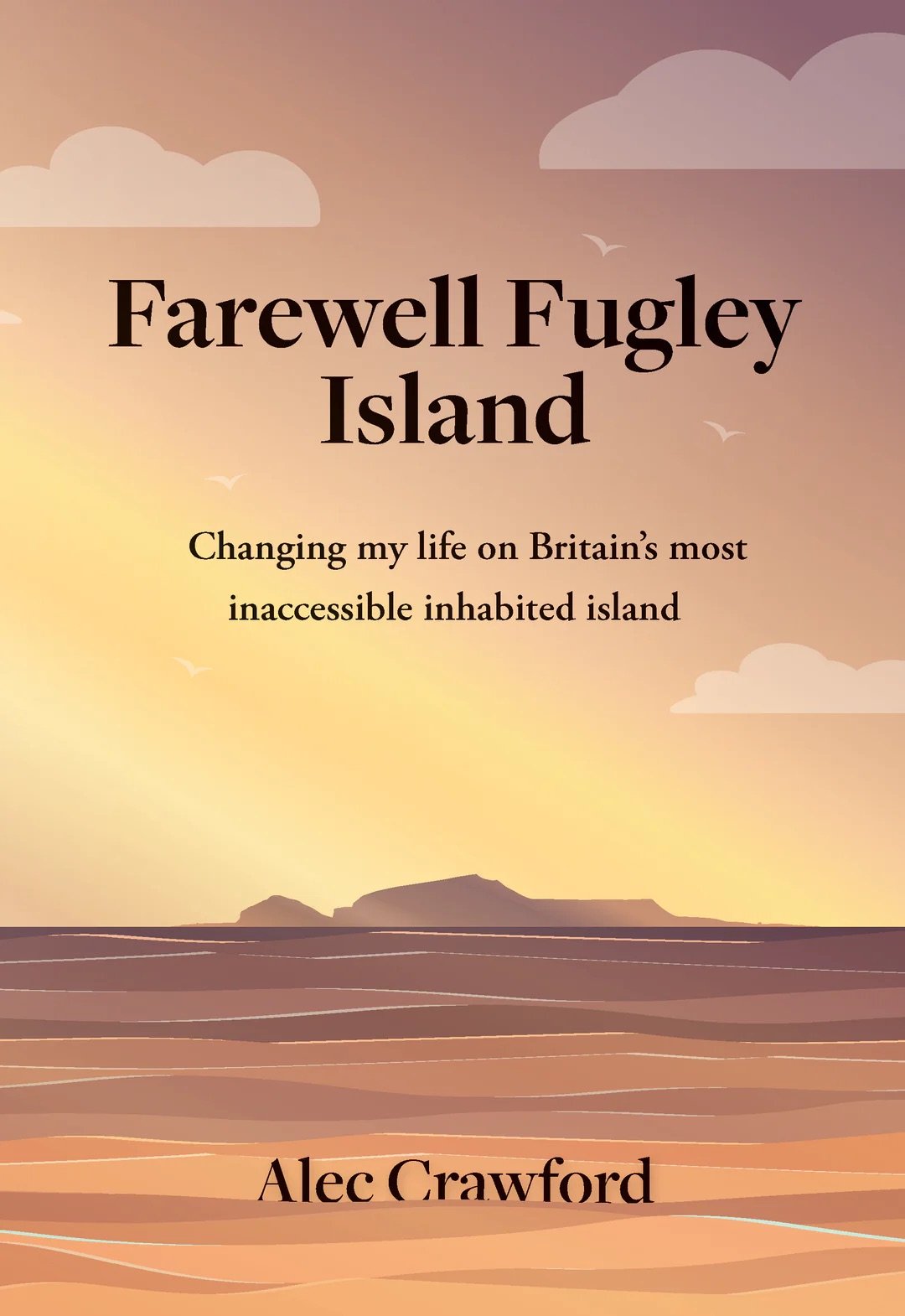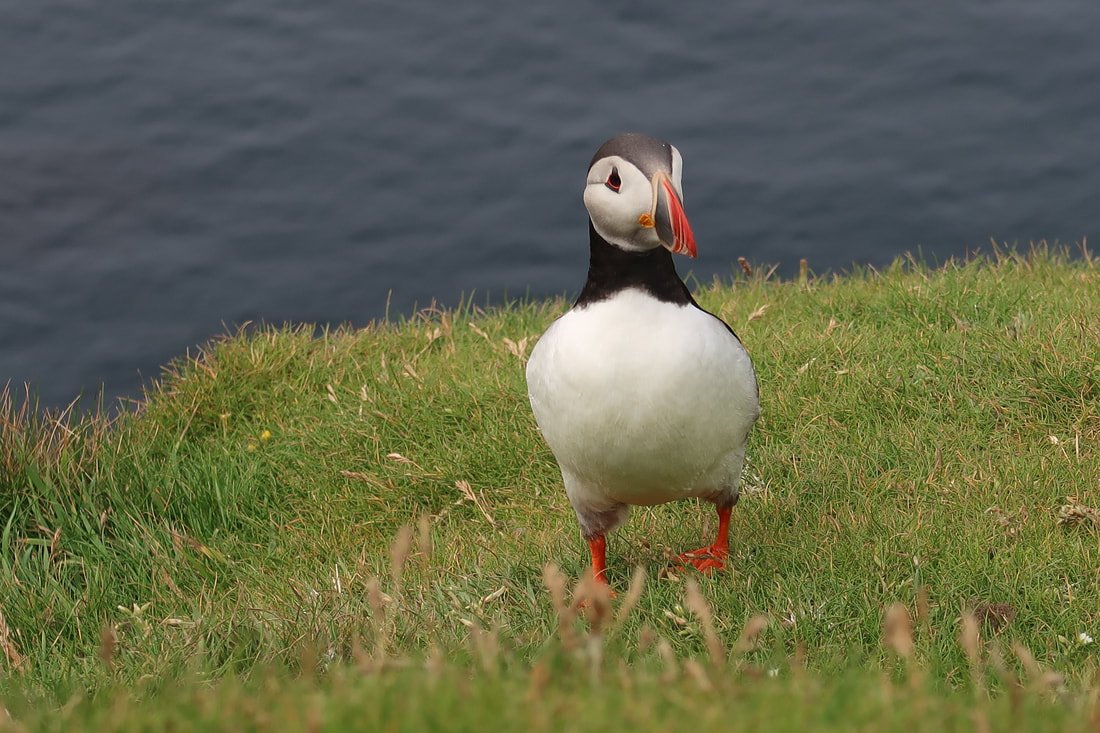Scottish travel blog from an islander’s perspective
Kirkabister self-catering: a review and itinerary for your stay
Nestled at the end of a winding country road just outside Vidlin, Kirkabister is a beautifully restored traditional cottage overlooking the sheltered waters of Vidlin Voe.
New to Shetland’s self-catering market, Kirkabister has been thoughtfully brought to life by owner Lynsey, whose attention to detail is seen throughout.
Sleeping up to eight guests, Kirkabister is ideal for families or groups looking to make the most of their Shetland holiday. Warm, welcoming, and rich in story, it’s more than a place to stay – it’s a home to return to. Read on for a full travel itinerary.
A trip to Papa Stour with Simmer Dim Charters
For many people visiting Shetland, a trip to one or more of the outer isles is always on the itinerary, and in Shetland, visitors are spoilt for choice. With 16 inhabited islands, 15 of them available to visit – nine by inter-island ferry – it can be tricky to pick which one to explore.
This week, I will show you why you should visit one of the lesser-explored islands, and this blog focuses on Papa Stour, with Simmer Dim Charters.
Shetland Travel Consultations: A Review
A huge thank you to everyone who has booked a travel consultation with me—I’m now fully booked! I’ve absolutely loved helping you plan your Shetland adventures, and I can’t wait to see your trips come to life.
If you missed out this time, don’t worry! I’ll be reopening bookings in autumn, so keep an eye out for updates. In the meantime, happy trip planning! I look forward to chatting with more of you later in the year.
Since Christmas, I have conducted over 40 individual consultations with people from around the world. From America to Australia, and from London to Tokyo — it’s been a privilege meeting so many people and helping them plan their adventures.
Last week, a lovely testimonial arrived in my inbox, which I wanted to share with you:
10 things to know about visiting Shetland
10 Things to Know Before Visiting Shetland!
Planning a trip to Shetland? Here are some key things to keep in mind:
Book accommodation early – 8-12 months in advance is best!
16 inhabited islands – Choose wisely based on what you want to see.
Two seasons: summer & winter – Spring & autumn are fleeting!
One base is enough – No need to move around to see it all.
Cruise ship days are busy – Plan visits to Lerwick accordingly.
Getting here – You can only arrive by ferry or plane.
Winter closures – Many attractions shut from autumn to spring.
Puffins are seasonal – Visit between mid-April and mid-August.
Book tours & meals ahead – Guides & trips fill up fast in summer.
Stay longer! – Most visitors leave wishing they had more time.
11 ways to make the most of your ski trip; skiing in Norway's 60 degrees north
I’ve always been drawn to northern places; perhaps it’s the familiarity or the sting of cold air on red cheeks, or possibly it’s the comparisons that can be drawn between my northerly place and another. Whatever the reason, the North Atlantic region and those areas that share a space on the latitude line with us fascinate me.
I’ve ventured to Iceland, Faroe and the far-flung St Kilda archipelago during my travels. All these places left a lasting impression on me in ways that more southern areas just don’t (sorry to those in the south, but the north just strikes a chord and stirs somewhere deep within my soul).
Last week, we stuck to our parallel line and headed 300 or so miles east of Shetland to the small town of Geilo, home to Norway’s best ski resort. Geilo sits almost halfway between Oslo and Bergen on the beautiful scenic train line which weaves through the mountains, connecting two of Norway’s most important economic and commercial centres. Home to just 2,500 or so residents, Geilo is flanked by mountains and sits at a latitude of 60.5334414 – similar to Lerwick, 60.152988.
Aufguss: The incredible power of sauna in Shetland
The older I get, the more I crave experiences that ground me, that allow me to truly connect with the natural world. I find myself increasingly seeking spaces that offer respite from the constant hum of digital noise and the demands of modern life. Believe it or not, but I spend most of my days sitting at a computer – not the open spaces and horizons that you see on my Instagram stories!
So, when Haar Saua invited me to visit their sauna on the beautiful St Ninian’s Isle beach for an Aufguss session, I didn’t have to think twice. In Nordic cultures, there is a term that embodies this kind of immersive experience – In Sauna. It refers to the profound, almost spiritual feeling you get from the intense heat of a sauna; a place where time slows, and everything else fades away.
A hike to the Mosquito plane crash site, Royl Field, Shetland
The Clift Hills are a series of low-lying hills (200-300 metres) that rise from Clift Sound. Royl Field (293m) is the largest of these hills and the second largest in Mainland Shetland (and the third largest in Shetland). During the Second World War, a de Havilland Mosquito Mk VII “DZ642” of the 627 Squadron, Royal Air Force, crashed on Royl Field on 22nd November 1944.
The Clift Hills dominate every area of the South Mainland. From Burra to the west, they rise steeply from the sea below, creating a ‘wall’ between east and west. In summer, low clouds and fog often threaten to spill over the hills from the east. When the South Mainland lies shrouded in a blanket of mist, the sun usually shines to the west, the hills providing a barrier against the encroaching sea fog.
Northern lights and drystone walling in Shetland; festive 2024
Happy New Year, and thank you for coming back here to read this first blog of 2025. Who can believe it’s 2025? We’re a quarter of the way through this century. Crazy.
We had a fine festive period, very quiet, yet slowly productive in the nicest possible way. The betwixmas days brought a period of settled and still weather – unlike last year’s relentless 80mph winds that were driven in on violent easterly weather systems. The (relatively) settled weather in the final week of December saw us out and working on our drystone walls, which we’re building in the garden.
The thing I wish I’d had when I went to New York …
In 2020, just before the world as we knew it drew to a standstill, my husband and I went to New York. We spent five days exploring the city and ticking off all the ‘must sees’ from the list. I spent months planning the trip in a notebook, and while we were there, I kept a little diary of our time. We did all the main attractions: Chrysler Building, the Empire State Building, the Flatiron Building, Madison and Times Square, Central Park, the Statue of Liberty, Brooklyn Bridge, DUMBO, Top of the Rock and much more besides.
I loved the few days we spent there, but a part of me felt that I could have planned it better.
But why am I telling you all this? When planning the trip, I felt overwhelmed and frustrated that nobody would prepare it for me, sit me down, and tell me what I needed to do to make the most of this beautiful city. I felt sure someone would offer a service to create a perfect New York itinerary tailored to my needs, but there wasn’t.
A guide to Shetland’s museums & heritage centres
Despite its relatively small size, Shetland has an incredible number of cultural heritage centres, supported by a willing army of volunteers who are passionate about recording the past, telling and sharing Shetland’s history, and celebrating the stories and folklore of the islands. Shetland has a strong storytelling tradition, and much of its cultural heritage has been preserved, meaning there’s a vast swathe of information to be explored. It’s perhaps therefore not surprising that for a community so passionate about its heritage, and one steeped in thousands of years of human history, that there are so many museums and heritage centres to explore.
Smaller community museums and heritage centres offer unique and detailed insights into individual communities – from the fascinating links to the wider world and entrepreneurial people who made their mark on the international stage, to the individual communities and the details of what shaped them.
Accessibility in Shetland: all you need to know about accessible travel in Shetland
From your journey here to the most accessible venues, accommodation and tours for your stay, we’ve worked with Ability Shetland to put together a guide to accessibility in the islands.
Shetland, Your Essential Travel Guide
After years of meticulous planning, research, and exploration, we are thrilled to announce the forthcoming release of our travel guide to Shetland. With stunning colour photographs and more than 250 pages brimming with useful information and insider tips, Shetland, Your Essential Travel Guide, is a labour of love, born from a shared dedication to showcasing the islands' natural beauty, intriguing history, and vibrant community life.
Exploring the Shetland Isles: A Caravan Adventure
The Shetland Isles, a remote and captivating archipelago located in the North Sea, are a hidden gem waiting to be explored. If you're an avid caravanner looking for a unique adventure, taking your caravan to Shetland is a fantastic idea. With stunning landscapes, rich history, and warm hospitality, Shetland offers a one-of-a-kind experience that you'll cherish forever. In this blog post, we'll guide you through the essential tips for taking your caravan to Shetland, including places to pitch, and highlight some must-visit destinations on the islands.
Foula’s Festive traditions & a guide to visiting
Lying about 20 miles west of Shetland, Foula is one of the UK’s most remote islands, and arguably the most isolated of any island in the UK. With a population of about 35, many thousands of birds, and five square miles to explore, Foula has an ‘edge of the world’ feel and will leave a lasting impression on those who visit.
Sitting alone in the vast, often unforgiving expanse of the North Atlantic, Foula looms from the horizon and is visible on a clear day from most parts of Shetland’s west coast. Its looming silhouette represents the last outpost of the UK, a final frontier. Echoing noisily with the sound of hundreds of thousands of seabirds in summer, and hard to access in winter as its name suggests – the word Foula comes from the Old Norse Fugley, meaning ‘bird island.’
A guide to a day in Hoy and a walk to the ‘Old Man’
Orkney is a special island to Shetlanders; we share a ferry, an unreliable airline, Scandinavian ties and a friendly rivalry, which is amplified every time our football teams meet on the pitch.
Orkney, with a population of around 22,000, has about 70 islands, with 20 inhabited. Mainland Orkney can get busy during the high season, particularly on days when cruise liners visit, so it’s always worth considering an island trip. I’ve already written about our time in Westray, and in this blog, we explore Hoy.
Why I’m not ashamed to visit Faroe
When I first announced on social media that I was visiting Faroe, I was met with the usual ill-informed judgement that so often blights this proud nation, which today is an independent territory belonging to Denmark. This is something I’d like to clear up at the outset before I dive into a blog about our time in the islands. I have based this response around a particularly vitriolic email I received and, to prevent any further ill-informed comments, I’ve embedded that response into my website, here, and invite you to read this before forming judgement based on propaganda.
Visiting Faroe — 7 tips for making your Faroe adventure memorable
Faroe sits at 62° north, halfway between Shetland and Iceland. Like Shetland, it’s an island archipelago comprising 18 significant islands and many smaller islands, rocks and skerries. Where relatively low-lying hills form Shetland, the terrain of Faroe is mountainous, imposing and almost impossible to farm. It’s a rugged country where communities are strung out along the shoreline at the head of deep fjords or bays, many of which are connected today by tunnels, forging routes through mountains and undersea. Yet, despite its harsh landscape and climate, the islands are home to a thriving community of around 54,000 people – almost twice the population of Shetland living in a similar-sized island group.
7 top tips for planning your Shetland Wool Week trip
As I write this, we are in the throes of the 14th Shetland Wool Week festival, which sees the arrival of knitters from all over the world in the islands to take part in the week-long celebration of Shetland’s textile heritage.
Wool Week is a hugely popular festival and marks the end of the busy summer season here in Shetland, and with this popularity comes high demand for accommodation, tickets and transport.
This blog is aimed at those planning to visit for Wool Week and how best to do this without too much stress!
Exploring the islands – Iona, Ulva and the Treshnish Isles
I adore islands and love nothing more than exploring new ones I’ve never experienced before. I love the process, the planning and poring over ferry timetables, checking weather updates and discovering what makes each island unique and special.
In June, we visited Mull, an ideal springboard for exploring several other islands in the region, including Iona, Ulva and the Treshnish Isles.
I hate the term’ island hopping’; it conjures up images of mindlessly ticking islands from a list in a cavalier-style bid to ‘see them all’. In a way, this is what we were doing, but I hope that this blog will provide a glimpse into what each of these islands is like, what makes them unique and why you should make an effort to visit and explore some of Scotland’s smaller islands in a more immersive way.
A week in Mull with Isle of Mull Cottages
I’m an island lass at heart. Islands run through my veins, and we were lucky enough to get the opportunity to spend some time exploring Mull recently. Islands provide an anchor to which I always return; they feel familiar and restorative – like home. The ever-present sea offers security and constancy in a fast-paced world. Islands allow me to slow down and breathe.
We spent our week with Mull Holiday Cottages, our trip coinciding with some of the best summer weather so far. Under the blue skies and turquoise waters of Mull, I was keen to explore these Inner Hebridean islands.
More about Shetland
Shetland is in my blood. Visit my blog for local insights, tips and advice.

















































Nestled at the end of a winding country road just outside Vidlin, Kirkabister is a beautifully restored traditional cottage overlooking the sheltered waters of Vidlin Voe.
New to Shetland’s self-catering market, Kirkabister has been thoughtfully brought to life by owner Lynsey, whose attention to detail is seen throughout.
Sleeping up to eight guests, Kirkabister is ideal for families or groups looking to make the most of their Shetland holiday. Warm, welcoming, and rich in story, it’s more than a place to stay – it’s a home to return to. Read on for a full travel itinerary.